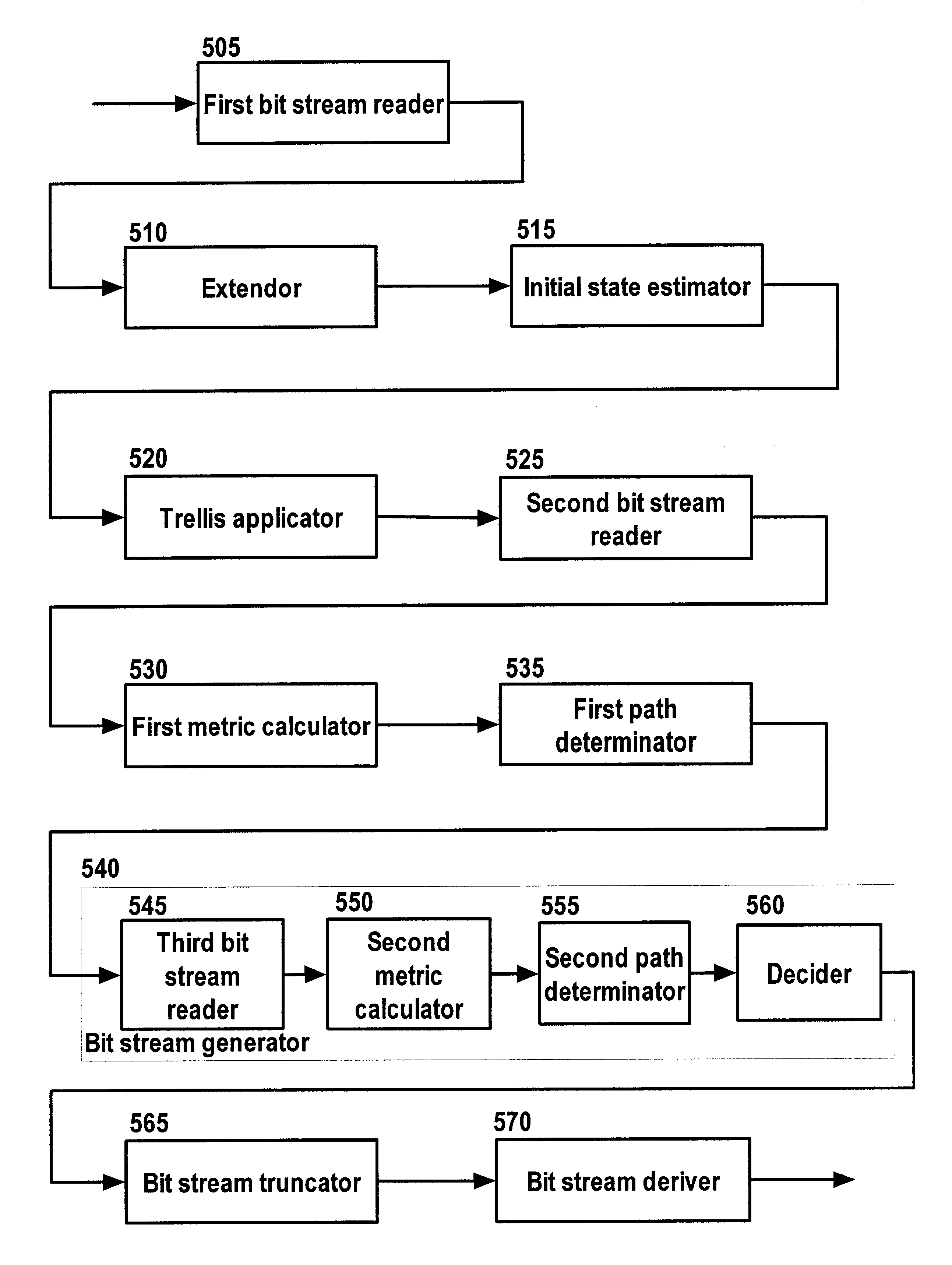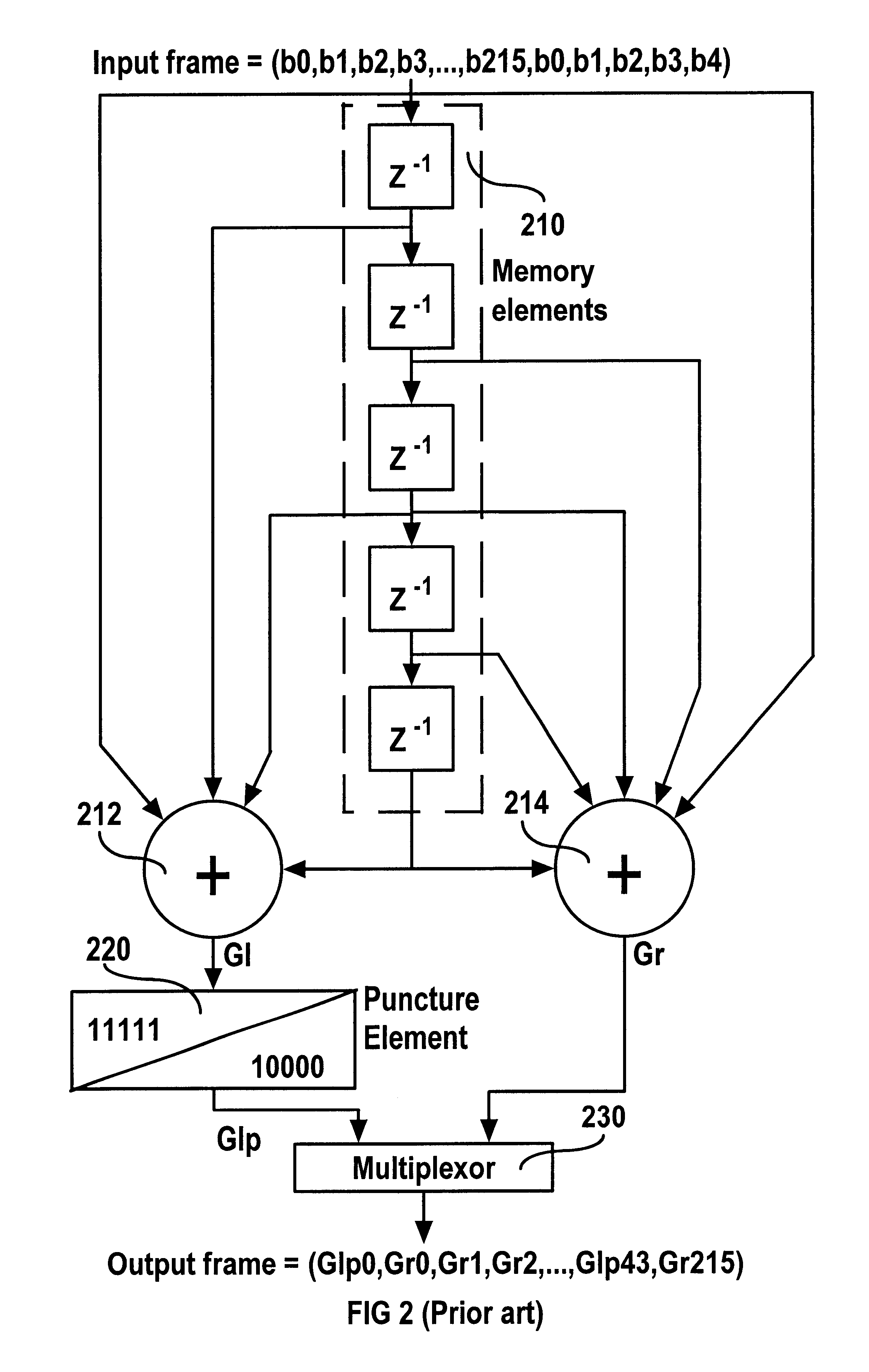Method and apparatus for channel decoding of tail-biting convolutional codes
a convolutional code and channel decoding technology, applied in the field of forward error correction, can solve problems such as high interference or other channel errors, and the introduction of noise in the medium, and achieve the effect of reducing the complexity of decoding process
- Summary
- Abstract
- Description
- Claims
- Application Information
AI Technical Summary
Problems solved by technology
Method used
Image
Examples
Embodiment Construction
With reference to FIGS. 4a and 4b, an embodiment of the present invention is directed to a method for hard-decision channel decoding of tail-biting convolutional codes. The method includes the step of receiving from a channel 405 an input bit stream encoded by a tail-biting convolutional channel encoder. The encoder includes a number of memory elements and has a rate. The input bit stream includes a series of symbols, each symbol includes a number of bits, and the number of bits per symbol is related to the rate of the encoder. The method further includes the step of generating a modified bit stream 410 including a number of symbols produced by repeating a segment of the input bit stream. The segment includes a number of symbols; the number of symbols is equal to the sum of a code-defined decision depth and a code-defined stabilization depth. The method further includes the step of assuming an initial accumulated Hamming distance for each possible initial state of the encoder 415. T...
PUM
 Login to View More
Login to View More Abstract
Description
Claims
Application Information
 Login to View More
Login to View More - R&D
- Intellectual Property
- Life Sciences
- Materials
- Tech Scout
- Unparalleled Data Quality
- Higher Quality Content
- 60% Fewer Hallucinations
Browse by: Latest US Patents, China's latest patents, Technical Efficacy Thesaurus, Application Domain, Technology Topic, Popular Technical Reports.
© 2025 PatSnap. All rights reserved.Legal|Privacy policy|Modern Slavery Act Transparency Statement|Sitemap|About US| Contact US: help@patsnap.com



